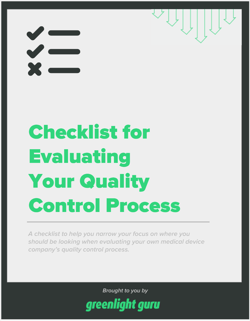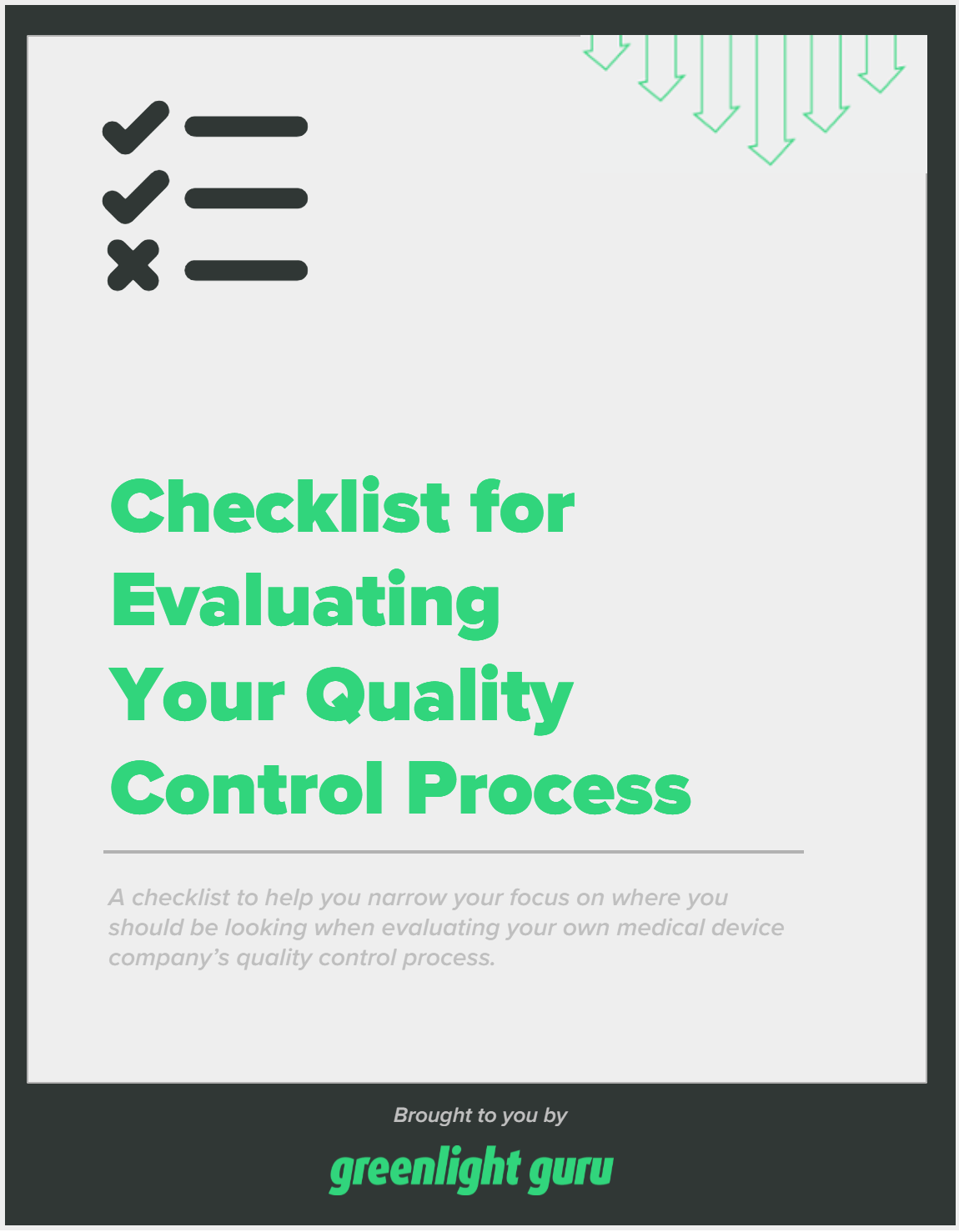Quality Assurance (QA) is a proactive process aimed at preventing defects by refining manufacturing procedures, while Qualiy Control (QC) is a reactive measure focusing on identifying defects in finished products, ensuring they meet stipulated requirements before reaching customers.
Quality Assurance (QA) and Quality Control (QC) are separate, but connected, processes that are central to the overall quality system at any medical device manufacturing company.
Medical device engineers sometimes use the terms quality assurance and quality control interchangeably, but a clear understanding of the difference between these two processes can bring clarity to the overall structure of the quality process in any medical device company.
FREE DOWNLOAD: Click here to download Checklist to Evaluate Your Quality Control Process.
Quality Control vs. Quality Assurance
What are the key differences between QA vs. QC?
Quality Assurance: It's All About The Process
Quality assurance can be defined as the activities for ensuring quality in the processes by which products are developed. This proactive process includes many methods, all with the purpose of preventing defects in the final product. Effective quality managers engage in quality assurance by improving product development and testing processes so that defects do not arise when the product is being developed.
The QMS itself is a quality assurance tool, serving as a record of all quality policies and procedures that go into creating the final product. Purchasing controls ensure that the raw materials used to manufacture a product consistently meet acceptable standards. Production and process controls are designed to create uniformity and consistency in the manufacturing process, helping to ensure the consistent production of quality goods.
Quality Control: It's All About The Product
While much of your QMS will be focused on assuring the quality of processes, quality control represents a set of activities that focuses on identifying defects in the products that you create. Quality control is typically the last controlled process that a product will go through before it is shipped. As such, an effective quality control process acts as a buffer between defective products and the customer. A perfect QC process would ensure that defective products are always identified and never make it to a store shelf or into the hands of a customer.
Quality control is typically handled by a specific person or team that tests finished products against predetermined acceptance criteria to determine whether the product conforms to specified requirements.
Integrating Quality Assurance & Quality Control in a Quality System
Greenlight Guru QMS offers the ideal support system for both quality assurance and quality control procedures at your medical device company. Product specifications are created in the product development stage of your medical device and documented in your QMS under the Design Controls section. These specifications set the expectations for how your product can be effectively manufactured.
Purchasing controls, production and process controls, and training guidelines for staff all live in your QMS and will need to be continuously updated in response to any defects you discover. Internal audits are also an important aspect of quality assurance, and any FDA audit will require that you present the findings of any internal audits you have conducted.
Quality control feeds back into quality assurance through the CAPA process, whose documents are all stored in your QMS. A non-conforming product creates a need for corrective and preventive actions, leading to a root cause analysis and a refinement of your procedures to help reduce incidences of non-conforming products in your inventory. Greenlight Guru QMS acts as a single source of truth for quality within your organization, allowing all authorized staff members to securely access your Quality Assurance and Quality Control processes and data, and use that data to build more powerful systems that produce better medical devices.
FREE DOWNLOAD: Click here to download Checklist to Evaluate Your Quality Control Process.
Related Links
Looking for an all-in-one QMS solution to advance the success of your in-market devices and integrates your quality processes with product development efforts? Click here to take a quick tour of Greenlight Guru's Medical Device QMS software →
Related Resources
The Medical Device Development Process: A Deep Dive into the 5 Phases
How To Prepare for an FDA Inspection (Plus 5 Tips)
What is a “Quality Data Source” for your CAPA Process?
Get your free PDF
Checklist to Evaluate Your Quality Control Process











